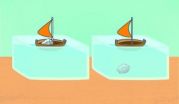(Press-News.org) Bottom Line: Children and adolescents with an abnormal kidney ultrasonography finding or with a combination of a fever of at least 102 degrees and infection with an organism other than E.coli appear to be at high risk for renal scarring with their first urinary tract infection (UTI).
Author: Nader Shaikh, M.D., of the Children's Hospital of Pittsburgh, and colleagues.
Background: UTIs are a common and potentially serious bacterial infection in young children. UTIs can lead to permanent renal scarring in up to 15 percent of cases in this population. Significant scarring can lead to reduced kidney function, which has been associated with hypertension, pre-eclampsia and end-stage renal disease later in life.
How the Study Was Conducted: The authors reviewed available medical literature to identify factors linked to the development of renal scarring and to develop a clinical prediction model that could be used to identify children at risk for scarring. The meta-analysis included data from nine cohort studies with 1,280 children (up to age 18 years).
Results: Of the 1,280 children, 199 (15.5 percent) had renal scarring. Factors associated with renal scarring were a fever of at least 102 degrees, infection with an organism other than E.coli, an abnormal kidney ultrasonography finding, polymorphonuclear cell count of greater than 60 percent, C-reactive protein level of greater than 40 mg/L and the presence of vesicoureteral reflux (abnormal urine flow backward from the bladder to the urinary tract). Children appear to have twice the baseline risk of scarring if they have an abnormal kidney ultrasonography finding or with a combination of a fever of at least 102 degrees and infection with an organism other than E.coli. According to the authors, this prediction model could be used to identify nearly 45 percent of the children who go on to scar.
Discussion: "Early identification of children at risk for renal scarring using the prediction rules developed in this study could help clinicians deliver specific treatment and follow-up for this small subgroup in the future."
INFORMATION:
(JAMA Pediatr. Published online August 4, 2014. doi:10.1001/jamapediatrics.2014.637. Available pre-embargo to the media at http://media.jamanetwork.com.)
Editor's Note: Please see article for additional information, including other authors, author contributions and affiliations, etc.
Editorial: Urinary Tract Infections, Kidney Damage
In a related editorial, Kenneth B. Roberts, M.D., of the University of North Carolina School of Medicine, Chapel Hill, writes: "In this issue of JAMA Pediatrics, Shaikh and colleagues report their analysis of risk factors for renal scarring in infants and young children following a urinary tract infection (UTI). The methods are notable."
"The major contribution of this report is its focus on renal scarring. A link between UTIs in children and renal damage leading to hypertension and/or end-stage renal disease in adults was postulated at least a half-century ago," Roberts notes.
"As we reflect on the past 50 years and the data regarding asymptomatic bacteriuria, VUR [vesicoureteral reflux] and antimicrobial prophylaxis, we need to keep our focus on the concern of central importance beyond the acute UTI, which, as the article by Shaikh et al reminds us, is renal damage."
(JAMA Pediatr. Published online August 4, 2014. doi:10.1001/jamapediatrics.2014.1329. Available pre-embargo to the media at http://media.jamanetwork.com.)
Editor's Note: Please see article for additional information, including other authors, author contributions and affiliations, etc.
Media Advisory: To contact author Nader Shaikh, M.D., M.P.H., call Andrea Kunicky at 412.692.6254 or email andrea.kunicky@chp.edu. To contact editorial author Kenneth B. Roberts, M.D., call Danielle M. Bates at 919-843-9714 or email danielle_bates@med.unc.edu.
To place an electronic embedded link to this study in your story The links for this study and editorial will be live at the embargo time: http://archpedi.jamanetwork.com/article.aspx?doi=10.1001/jamapediatrics.2014.637 and http://archpedi.jamanetwork.com/article.aspx?doi=10.1001/jamapediatrics.2014.1329.
Identifying kids, teens with kidney damage risk after first urinary tract infection
2014-08-04
ELSE PRESS RELEASES FROM THIS DATE:
Study examines midlife hypertension, cognitive change over 20-year period
2014-08-04
Bottom Line: Hypertension in middle age (48 to 67 years) was associated with a greater, although still a modest, decline in cognition over a 20-year period compared with individuals who had normal blood pressure.
Author: Rebecca F. Gottesman, M.D., Ph.D., of the Johns Hopkins University School of Medicine, Baltimore, and colleagues.
Background: Evidence suggests hypertension is a risk factor for cognitive change and dementia and midlife hypertension may be the stronger risk factor.
How the Study Was Conducted: Authors used the Atherosclerosis Risk in Communities ...
Higher chance of hospital death found in areas where emergency departments have closed
2014-08-04
In the first analysis of its kind, UC San Francisco research shows that emergency department closures can have a ripple effect on patient outcomes at nearby hospitals.
In a study of more than 16 million emergency admissions to California hospitals between 1999 and 2010, researchers found that patients who were admitted to facilities located in the vicinity of an emergency department (ED) that had recently closed experienced 5 percent higher odds of dying than patients admitted to hospitals that were not near a recently closed ED.
The odds of dying were even higher for ...
Poor people with diabetes up to 10 times likelier to lose a limb than wealthier patients
2014-08-04
It's no secret that poverty is bad for your health. Now a new UCLA study demonstrates that California diabetics who live in low-income neighborhoods are up to 10 times more likely to lose a toe, foot or leg than patients residing in more affluent areas of the state. Earlier diagnosis and proper treatment could prevent many of these amputations, the researchers say.
The study authors hope their findings, published in the August issue of Health Affairs, will motivate public agencies and medical providers to reach out to patients at risk of late intervention and inspire ...
Cost-saving effort in health care falls short of goals, study finds
2014-08-04
A pilot program intended to implement and test a cost-saving strategy for orthopedic procedures at hospitals in California failed to meet its goals, succumbing to recruitment challenges, regulatory uncertainty, administrative burden and concerns about financial risk, according to a new RAND Corporation study.
The outcome represents a disappointing effort to widely adopt bundled payments, a much-touted strategy that pays doctors and hospitals one fee for performing a procedure or caring for an illness. The strategy is seen as one of the most-promising ways to curb health ...
An embryonic cell's fate is sealed by the speed of a signal
2014-08-04
VIDEO:
To visualize cells' responses to the signals that ultimately lead them to choose a fate, the researchers engineered a protein involved in this response, Smad4, to glow. In response to...
Click here for more information.
When embryonic cells get the signal to specialize the call can come quickly. Or it can arrive slowly. Now, new research from Rockefeller University suggests the speed at which a cell in an embryo receives that signal has an unexpected influence on that ...
Scientists uncover combustion mechanism to better predict warming by wildfires
2014-08-04
Scientists have uncovered key attributes of so-called "brown carbon" from wildfires, airborne atmospheric particles that may have influenced current climate models that failed to take the material's warming effects into account. The work was described by a collaborative team of researchers from Los Alamos National Laboratory, Carnegie Mellon University and the University of Montana in the journal Nature Geosciences this week.
"Biomass burning and wildfires emit fine particulates that are toxic to humans and can warm or cool climate. While their toxicity is certain, their ...
Fires not slowing around Yellowknife
2014-08-04
Fires and the resultant smoke that comes from them are both just as widespread and heavy as they were in the month of July. Hundreds of fires dot the landscape and the Northwest Territories Live Fire map shows the extent of the wildfires and hot spots that have been reported. Fire danger around this area of the Northwest Territories remains in either the high or extreme range. On the live fire map, notated detections of new fires number in the dozens. These fires are ones having been detected within the last 24 hours. Residents of Yellowknife were witness to red lightning ...
'I cant figure out how to do this!'
2014-08-04
"Physics summer work, please help!!!," a post on Yahoo! Answers begins. "I cant figure out how to do this anywhere!!! Best answer awarded? Need help immediately!!!!!."
Most of the science and math queries on Yahoo! Answers resemble this one, although some are less hysterical. But they all make people who love science and teaching science cringe. It's not that they think the students are "cheating" by trying to google the answer, but rather that they know students who ask this kind of question are learning nothing and probably confirming a secret conviction that they're ...
Speedier diagnosis of diseases such as cancer likely thanks to new DNA analysis technique
2014-08-04
Researchers from McGill University and the Génome Québec Innovation Centre have achieved a technical breakthrough that should result in speedier diagnosis of cancer and various pre-natal conditions.
The key discovery, which is described online this week in the Proceedings of the National Academy of Sciences (PNAS), lies in a new tool developed by Professors Sabrina Leslie and Walter Reisner of McGill's Physics Department and their collaborator Dr. Rob Sladek of the Génome Québec Innovation Centre. It allows researchers to load long strands of DNA into a tunable nanoscale ...
In defense of mouse models for studying human disorders
2014-08-04
Mouse models of human diseases are essential research tools that are widely used in the medical sciences to increase our understanding of the pathogenesis and pathophysiology of various diseases, and to search for cures. Despite the widespread use of mice as animal models of disease, in 2013, Seok et al. reported that mouse models poorly mimic human inflammatory diseases, such as severe burn injury, sepsis, and acute infection, in terms of gene expression (PNAS 2013, 110(9), 3507-3523), which has been cited more than 400 times since its publication only 18 months ago. Their ...





